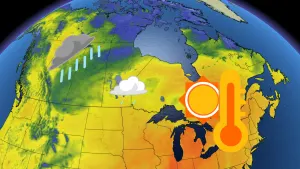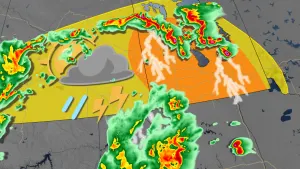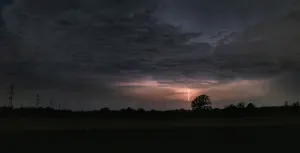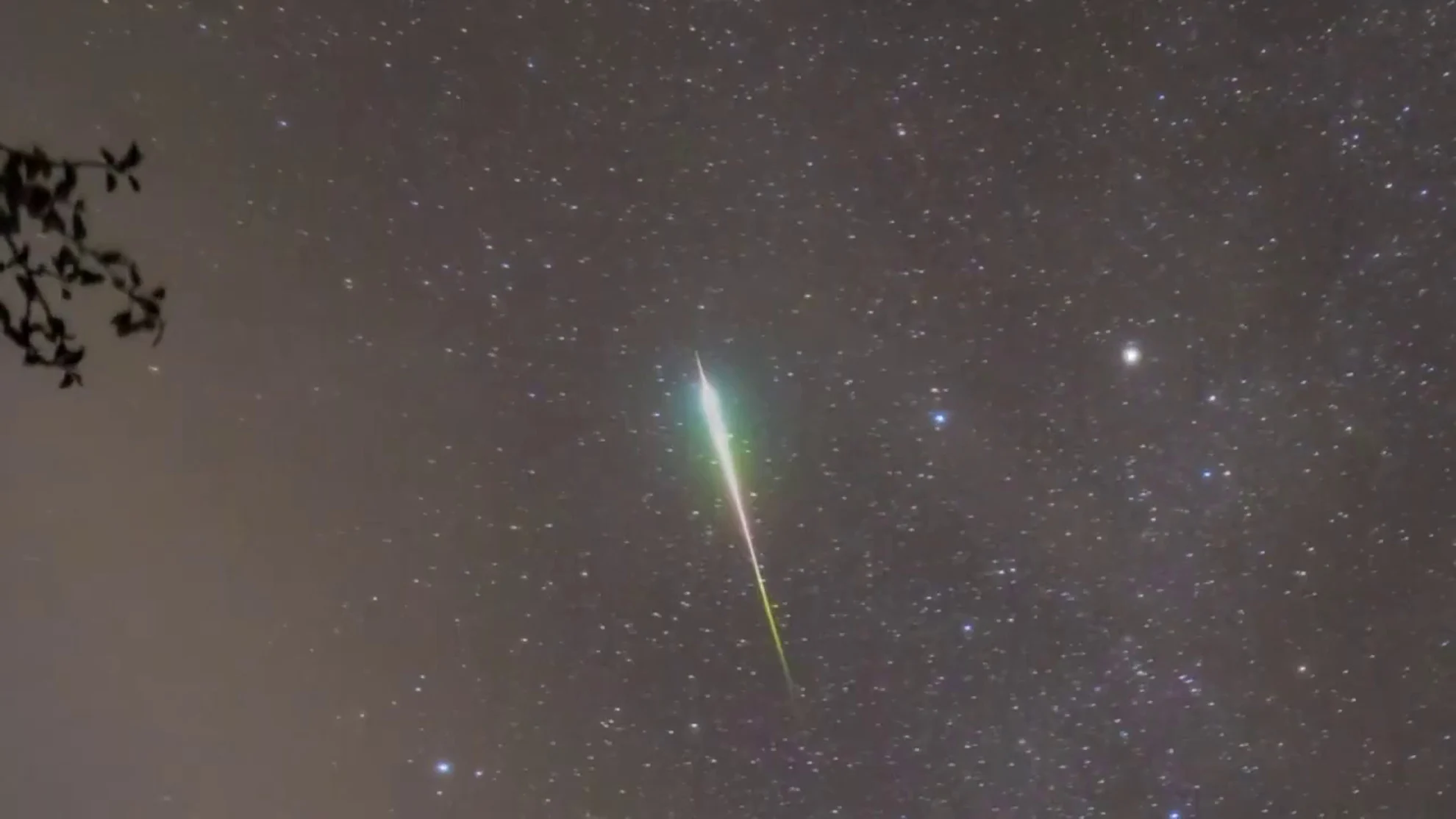
Watch for Halley's Comet meteors streaking through the night sky
Eyes to the sky as the eta Aquariid meteor shower peaks this weekend.
The 2024 eta Aquariid meteor shower is reaching its peak, and this year it may put on an exceptional show in our pre-dawn skies.
Every year, from mid-April through the end of May, Earth passes through a stream of ice and dust left behind by the passage of Halley's Comet through the inner solar system.
As these tiny meteoroids get swept up by Earth's atmosphere, they produce brief streaks of light through the night sky, known as meteors. Since these particular meteors all appear to originate from a point in the sky near the star eta Aquarii, in the constellation Aquarius, astronomers call this the eta Aquariid meteor shower (aka "the eta Aquariids").

This simulated view of the night sky shows the constellation Aquarius above the eastern horizon on the morning of May 6, 2024. Also visible here is the radiant of the eta Aquariids meteor shower, along with the location of the closest star to the radiant, eta Aquarii. The location of the star delta Aquarii is indicated as well, which lends its name to the twin delta Aquariid meteor showers that appear each fall. (Stellarium/Scott Sutherland)
The best time to see the eta Aquariids is from 2 a.m. to 5 a.m. local time, as the radiant — the point in the sky the meteors appear to stream out of — rises with Aquarius in the pre-dawn hours at this time of year.
While the eta Aquariids occur over a period of roughly a month and a half, they tend to put on their best showing between the dates of May 1 and May 10. However, the greatest number of meteors is expected during the peak, on the mornings of Sunday, May 5 and Monday, May 6.
At that time, observers watching from under a clear dark sky could see between 15-20 meteors every hour. That averages out to one every three to four minutes.

(Austin Human/Unsplash)
For most meteor showers during the year, the best advice is to sit back and take in as much of the sky above as possible. This is because meteors tend to show up randomly, and with the radiant climbing high in the sky, the meteors can hit the atmosphere anywhere overhead.
However, the eta Aquariids are a bit different. With the radiant rising so late, it doesn't reach very high in the sky before twilight begins to show up.
Robert Lunsford from the American Meteor Society says that observers should focus their attention low in the eastern sky each morning for the best chance at spotting eta Aquariid meteors.
READ MORE: How to get the most out of meteor showers and other night sky events
A better show than usual?
This year's eta Aquariids already promise to put on a better show than we had last year.
In 2023, the meteor shower peaked just one night after the Full Moon, which meant there was plenty of bright moonlight to wash out the faintest meteors. In 2024, though, the peak occurs a few days before the New Moon, with only a thin Waning Crescent Moon rising just as morning twilight begins to brighten the sky.
However, we could be in for an added bonus for the 2024 eta Aquariids.
"The best rates occur from May 1-10 with an added bonus as rates are expected to be enhanced by debris perturbed by Jupiter in a direction closer to the Earth. This last occurred in 2013, when rates were significantly enhanced," Lunsford wrote on the AMS website. "Most observers in the northern hemisphere usually see a maximum of 15-20 eta Aquariid meteors per hour under ideal conditions. Those rates could be doubled this year should the enhancement occur."
Persistent Trains
The eta Aquariids don't tend to produce bright fireballs as the Lyrids do. However, observers have reported a different phenomenon.
As Comet Halley meteoroids streak through the air at 240,000 km/h, we see the typical meteor flashes. However, after some meteors wink out, a glowing trail is left behind in their wake which can float on the wind for minutes or even hours after the meteor flash has disappeared.
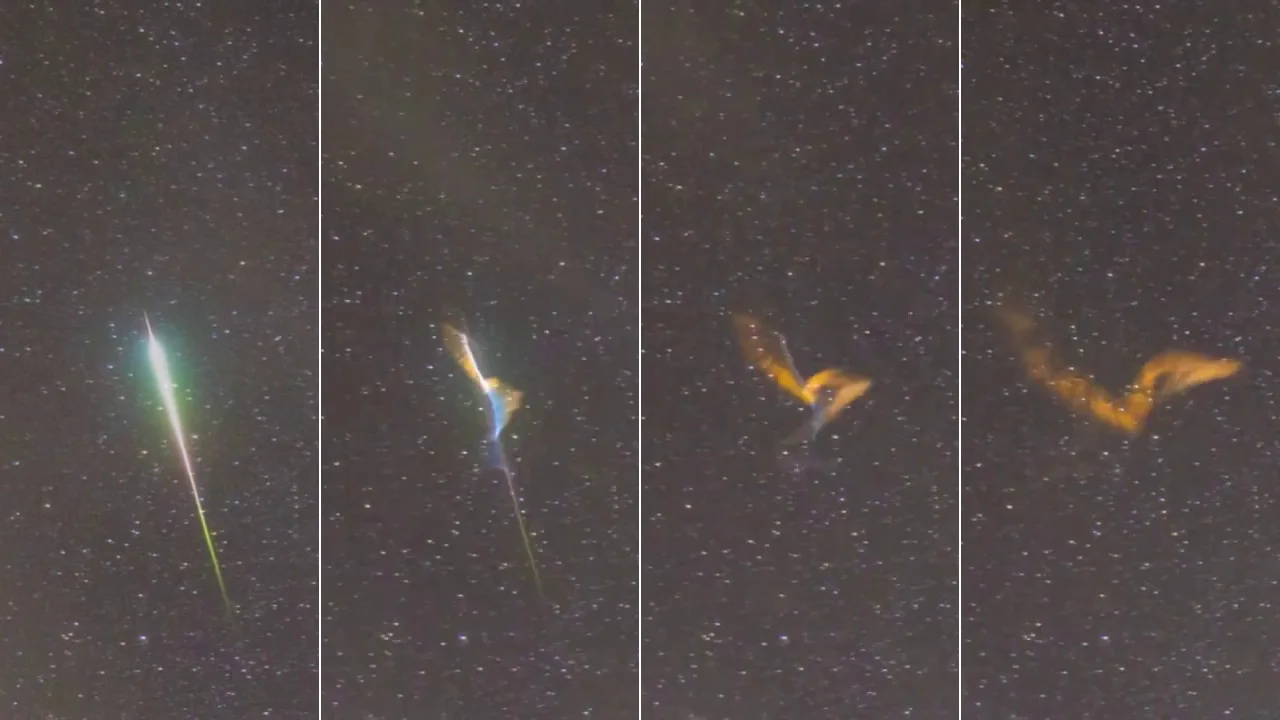
Four frames taken from a persistent train video, shot on October 21, 2022, show the initial Orionid meteor flash, and three views of the persistent train that developed in its wake. (Brenda Tate & Tim Doucette via Storyful)
These are known as persistent trains.
Given how rarely this phenomenon has been recorded, researchers aren't sure exactly how they occur. It could be that the meteors release so much energy that they strip electrons from the air molecules they speed past. When those electrons rejoin with the air molecules, they release that extra energy as a burst of light, similar to how auroras occur. It's also possible that the train results from chemiluminescence, which is when metals vapourizing from the fast-moving meteoroid chemically react with oxygen and ozone in the atmosphere to produce light.
Two Halley's Comet meteor showers
The eta Aquariids are just the first of two meteor showers that we see each year from Halley's Comet.
Most comets tend to pass near Earth's orbit only once. As Halley swings around the Sun every 75 years or so, the path it traces is at just the right angle that it intersects with Earth's orbit twice.

This diagram shows the two points when Earth passes near the path of Halley's comet, in May and October each year. While the planets orbit in a counter-clockwise direction around the Sun in this view, Halley's path is clockwise, thus it would enter this view from the bottom of the image and exit off the right side. (NASA/JPL-Caltech)
In April and May, we sweep through the 'outbound' flow of Halley's debris, which is the dust and ice that trails behind the comet after it rounds the Sun and is headed back into the depths of the solar system. Since this debris is coming at us from the direction of the Sun, we only see these meteors in the hours before sunrise.
During the month of October, we pass through the 'inbound' flow of Halley's debris, which follows the comet's path as it approaches its closest distance to the Sun. This results in the Orionid meteor shower. With the meteoroids arriving from opposite the Sun, the Orionids last for much of the night, from around 10 p.m. and until sunrise.
Thumbnail courtesy Brenda Tate & Tim Doucette, via Storyful








